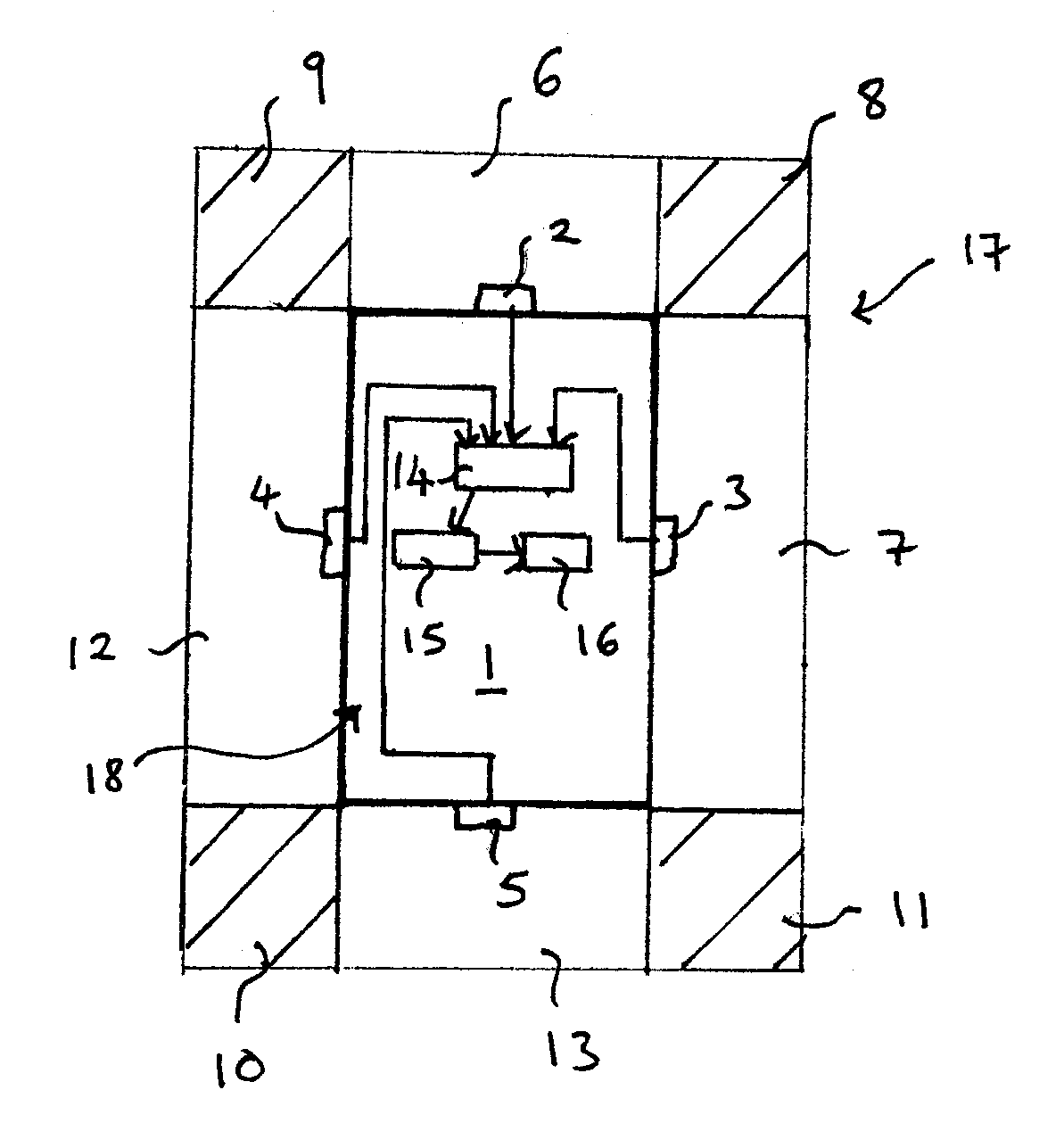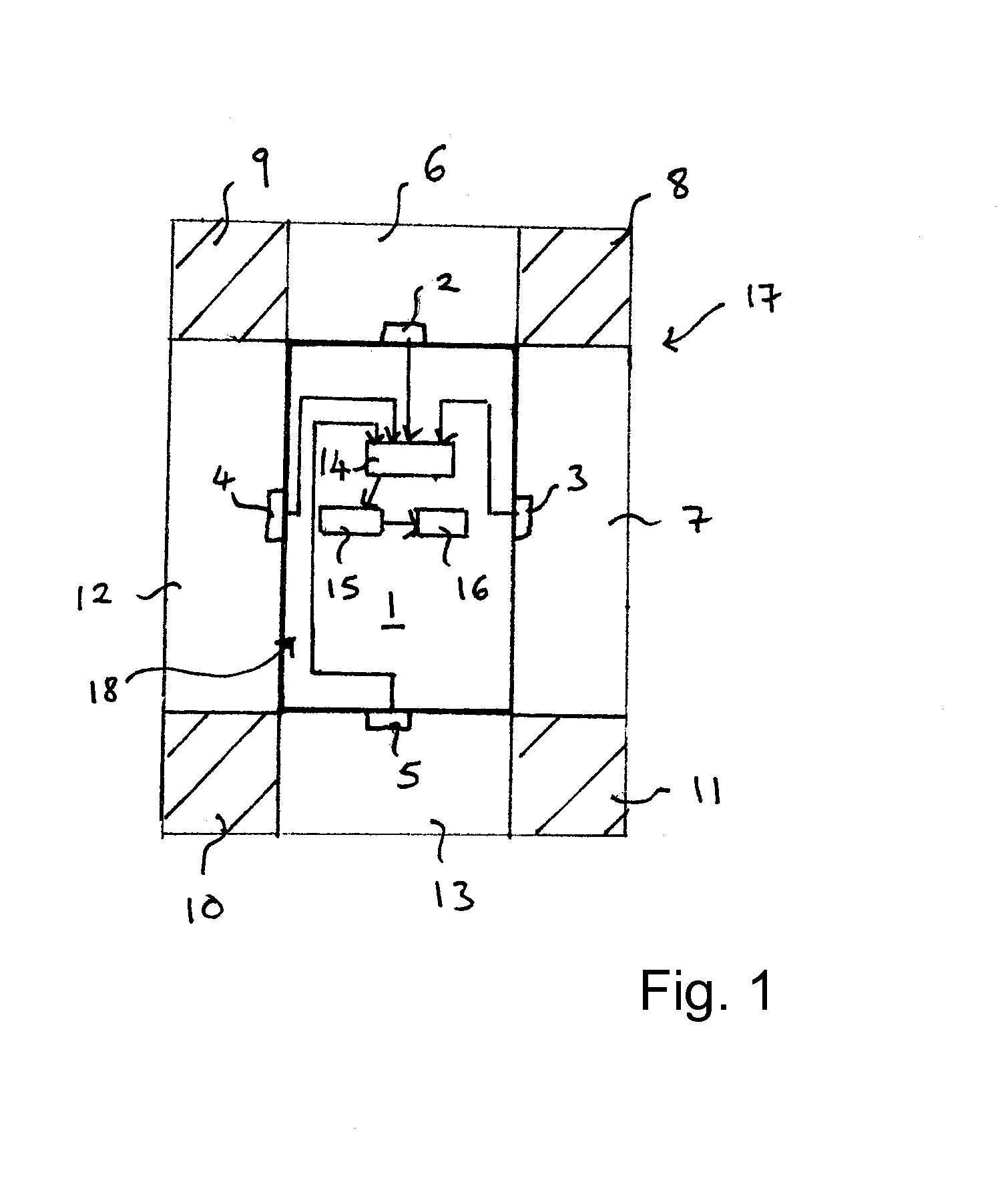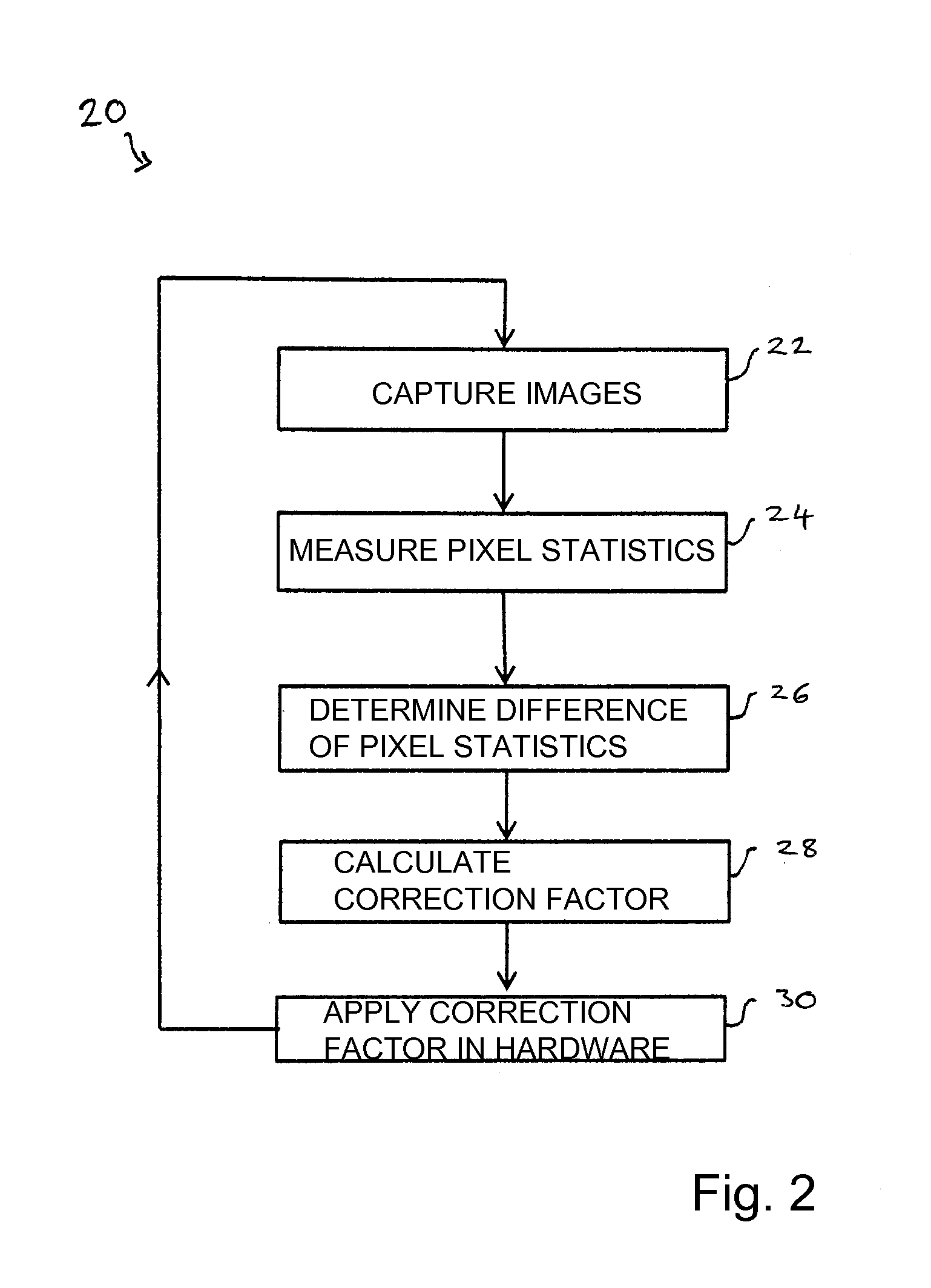System, Device and Method for Displaying a Harmonized Combined Image
a combined image and system technology, applied in the field of systems, devices and methods for displaying harmonized combined images, can solve the problems of certain processing resources and difficult to discern combined images, and achieve the effects of reducing the difference in pixel statistics, reducing processing resources, and avoiding the application of correction factors in image processing routines
- Summary
- Abstract
- Description
- Claims
- Application Information
AI Technical Summary
Benefits of technology
Problems solved by technology
Method used
Image
Examples
first embodiment
[0037]A flow chart 20 representing a method for harmonizing a combined image is illustrated in FIG. 2. For the purposes of describing the method, two cameras and a single overlap region will be considered first. However, the method may be carried out for all four cameras and all four overlap regions.
[0038]In step 22, a respective image 6, 7 is received from each of two or more cameras, in particular, from the front camera 2 and the adjacent right camera 3. The same real-world region of the surrounding environment is captured in the overlap region 8 by the front camera 2 in image 6 and by the right camera 3 in image 7. Therefore, the respective pixel statistics of the images 6 and 7 should be the same as one another in the overlap region 8.
[0039]In step 24, the pixel statistics of a predetermined number of predetermined pixels in the overlap region 8 are measured in a given frame of the image 6 from the front camera 2 and of the image 7 of the right camera 3.
[0040]In step 26, the di...
second embodiment
[0061]FIG. 4 illustrates a flow chart 40 representing a method for harmonizing an image according to a In the flow chart 40, the steps 22, 24, 26 and 28 of the flowchart 20 illustrated in FIG. 2 are carried out similarly as described above and are not explained again.
[0062]After the correction factor has been calculated in step 28, in decision diamond 42, it is determined whether the correction factor is predicted to result in a gain value for the hardware device which is higher than a predetermined maximum gain value. In the case that the correction factor is predicted to result in gain value for the hardware device which is higher than a predetermined maximum gain value, the step 44 is performed in which the correction factor is adjusted so that the predicted gain value for the hardware device is less than or equal to the predetermined maximum gain value. This adjusted correction factor is applied in the hardware device in step 30.
[0063]If, in decision diamond 42, the correction ...
third embodiment
[0065]FIG. 5 is a flowchart 50 representing a method for harmonizing an image according to a In the flowchart 50, two steps are performed after an image is received from each of the two or more cameras in step 22. In the first branch, the steps 24, 26, 28, 42, optionally step 44, and step 30 are carried out as in the method illustrated by flowchart 40 in FIG. 4 and are not described again here.
[0066]In the second branch, after step 22, the images from two or more cameras are combined and displayed in step 52. Since the correction factor is applied in the hardware, the images received in step 22 have already had the correction factor from the previous iteration of the method applied to all of the pixels. Therefore, by reiterating the method illustrated by the flowchart 50, the combined image produced in step 52 may be increasingly harmonized in successive frames thereof, and differences in the luminance and, optionally color, in the images received from the different cameras are red...
PUM
 Login to View More
Login to View More Abstract
Description
Claims
Application Information
 Login to View More
Login to View More - R&D
- Intellectual Property
- Life Sciences
- Materials
- Tech Scout
- Unparalleled Data Quality
- Higher Quality Content
- 60% Fewer Hallucinations
Browse by: Latest US Patents, China's latest patents, Technical Efficacy Thesaurus, Application Domain, Technology Topic, Popular Technical Reports.
© 2025 PatSnap. All rights reserved.Legal|Privacy policy|Modern Slavery Act Transparency Statement|Sitemap|About US| Contact US: help@patsnap.com



